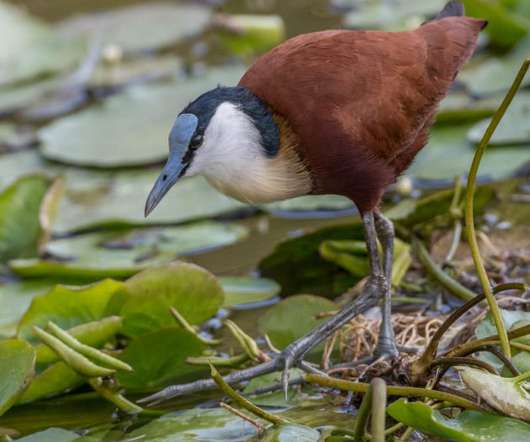Pink in Africa
10,000 Birds
MAY 12, 2013
Africa’s pelicans can be a bit confusing on the identification front as Great White does show an overall pink blush in its plumage during breeding season whereas the pinkest part of Pink-backed Pelican is its lower back, which is only seen in flight! Great White Pelicans showing the pink flush of breeding plumage. Photo by Adam Riley.
















Let's personalize your content